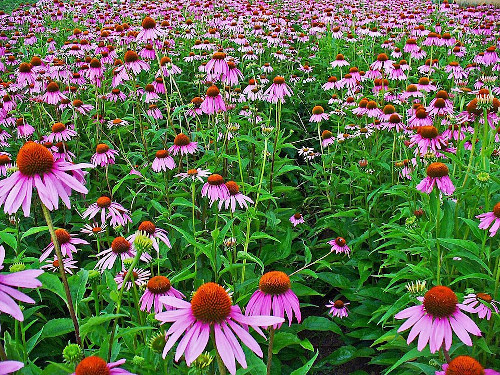Facts about Echinacea
Cultivation
Cold stratification mimics winter conditions and can break seed dormancy; 4°C for approx. 4 weeks is described as effective in studies.
- Perlite
- Sandy substrates
- Hydroponic rockwool
Active compounds (root & herb)
Medicinal Plant
Recognized application: Support of the body's natural defenses against colds; traditionally used for respiratory infections.
Active compounds: Polysaccharides, alkamides, caffeic acid derivatives (cichoric acid), essential oil
Dosage: Preparations vary (tea, pressed juice, tinctures); use standardized extracts according to manufacturer's instructions
Special notes: Clinical evidence mixed; effectiveness depends heavily on extract quality and plant part used.
Sources: Commission E Monograph (BfArM), HMPC Monograph EMA/HMPC/104631/2005, German Pharmacopoeia (DAB). Note: This information does not replace medical consultation. For complaints, please consult a doctor or pharmacist.
Important cultivation notes
- Germination often irregular – cold stratification improves results
- Long cultivation period: flowers and active compounds only relevant from 2nd year
- Avoid waterlogging and poor ventilation
- Harvest roots only from 3rd year for medicinal use
Cultivation steps
- Pre-chill seeds for 1-4 weeks at approx. 4°C (moist-cold stratification)
- Sow on moist substrate, press lightly (light germinator)
- Germination at 18-22°C after 10-20 days
- After formation of several leaves, transfer to hydroponic system
- Ensure full sun and consistent watering
- From 2nd year, harvest flowers for medicinal use
- Root harvest earliest from 3rd year
Cold stratification
- The general mechanism of cold stratification (imitating winter conditions, breaking physiological dormancy) is well documented (see Baskin & Baskin; Extensions). For Echinacea, there are several studies reporting moist-cold (4°C) for several weeks as effective; at the same time, conservative sources (USDA/guidelines) exist that describe longer periods or even direct sowing without stratification depending on species/batch — hence slight uncertainty in the exact recommended duration (1-12 weeks).
Context:




Add Comment